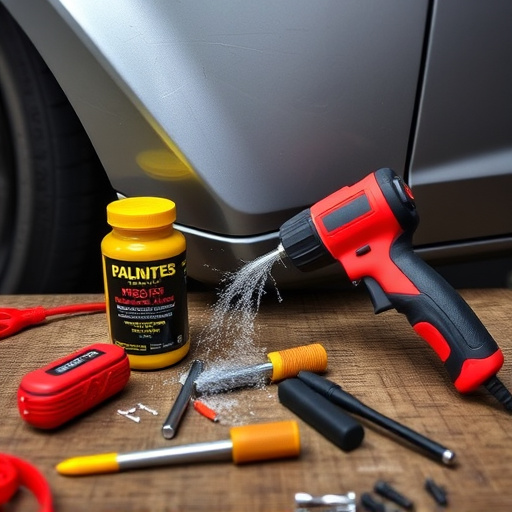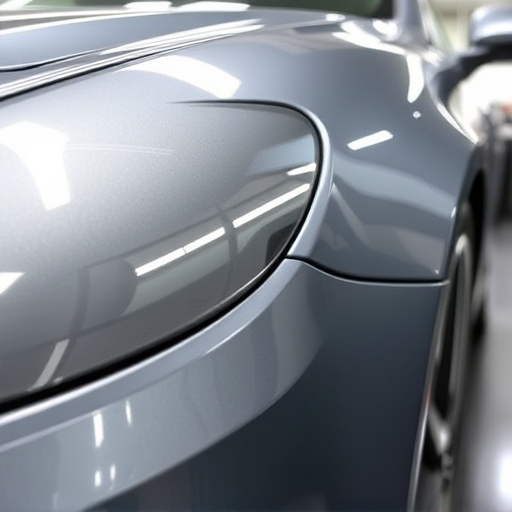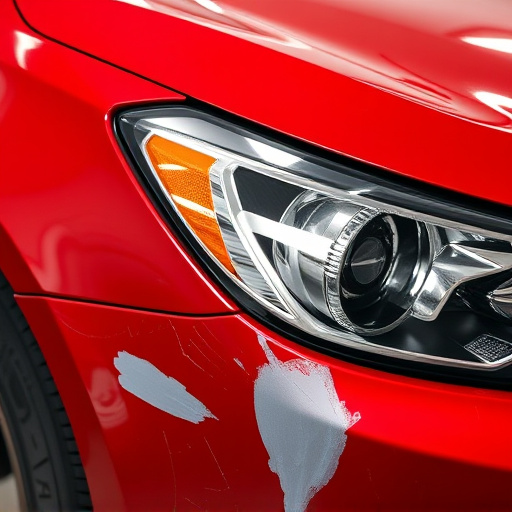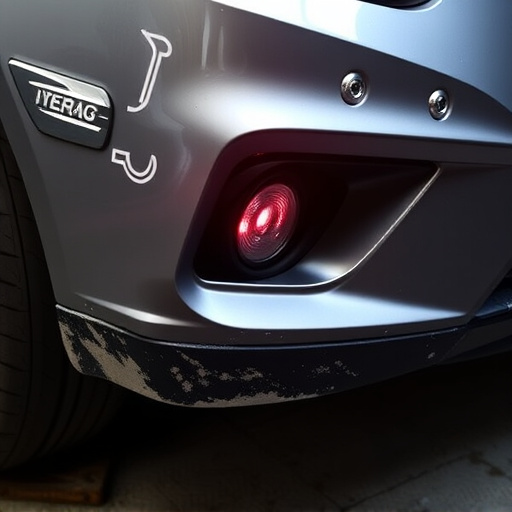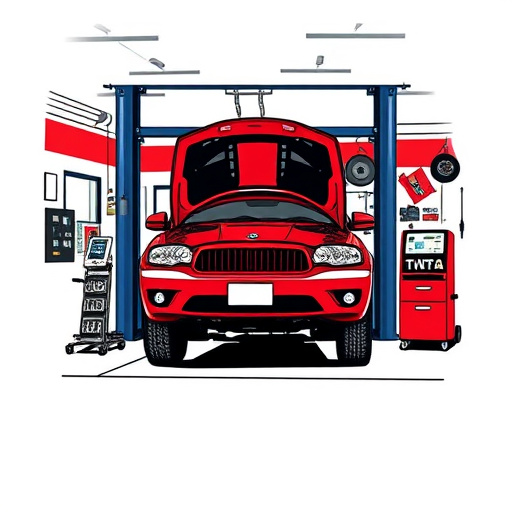Heat damage auto body repair involves assessing and restoring vehicles affected by high temperatures from fires or overheating. Technicians use visual exams, diagnostic tools, and non-destructive testing to identify warped metal, charred finishes, and hidden damage. A meticulous process includes disassembly, debris removal, component replacement, and precise paint application to return the vehicle to pre-damage condition.
In the realm of auto body repair, heat damage presents unique challenges. This comprehensive guide explores how technicians navigate the intricate process of assessing severity in heat-damaged vehicles. From understanding the nuances of heat impact on various materials to employing advanced assessment techniques, each step is crucial for accurate diagnosis and effective restoration. Discover a deep dive into the science and methodology behind repairing heat damage, offering insights for both professionals and enthusiasts alike in the world of auto body repair.
- Understanding Heat Damage in Auto Body Repair
- Assessment Techniques for Severe Heat Damage
- Restoring Vehicles: A Step-by-Step Guide
Understanding Heat Damage in Auto Body Repair

Heat damage in auto body repair refers to the degradation or distortion of a vehicle’s structural and cosmetic components due to exposure to high temperatures. This can occur during various incidents, such as car fires, accidents involving overheating engines, or even proximity to industrial heat sources. Understanding heat damage involves recognizing its distinct patterns—from warped metal and melted plastics to charred finishes and weakened frameworks. Each component affected requires specialized care, making accurate assessment crucial for effective car body repair.
Technicians in collision centers and collision repair shops employ meticulous inspection techniques to evaluate the extent of heat damage. They inspect not only visible surfaces but also internal components, as heat can penetrate beyond what’s immediately apparent. By combining visual examinations with advanced diagnostic tools, they identify affected areas, determine the severity of damage, and develop tailored repair plans. This comprehensive approach ensures that every aspect of the car body repair process—from disassembly to replacement parts selection—is guided by a thorough understanding of the heat damage encountered.
Assessment Techniques for Severe Heat Damage
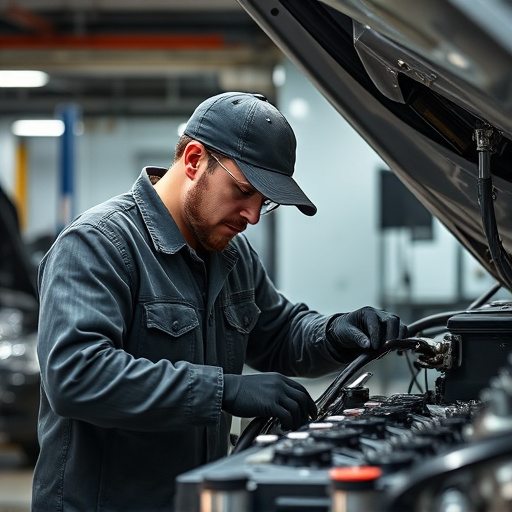
When dealing with severe heat damage in auto body repair, technicians employ specialized assessment techniques to accurately gauge the extent of the devastation. They begin by meticulously examining the vehicle’s exterior and interior for signs of charring, warping, or melting, using their expertise to identify affected areas. Advanced tools such as infrared thermometers and digital calipers are deployed to measure temperature variations and dimensional changes, providing crucial data points for analysis.
In addition to visual and instrumental assessments, technicians may conduct non-destructive testing (NDT) methods like ultrasonic inspection or X-ray imaging to reveal hidden damage beneath the surface. These techniques are particularly valuable in evaluating structural integrity, identifying compromised panels, or detecting moisture intrusion—all essential factors in determining the complexity of the heat damage auto body repair process and the scope of required car paint services or auto glass repair.
Restoring Vehicles: A Step-by-Step Guide
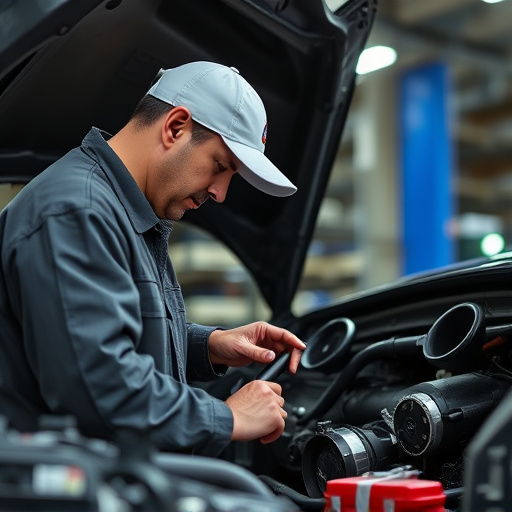
Restoring a vehicle affected by heat damage involves a meticulous process that requires skilled technicians. The journey to restoring a damaged car begins with a thorough inspection. Technicians carefully assess every detail, from the extent of burning and charring to identifying potential structural integrity issues. This initial step is crucial in determining the scope of work ahead.
Once the assessment is complete, the auto body shop can begin the restoration process. This typically involves several steps: disassembling damaged panels for detailed inspection and repair, using specialized tools to remove burnt debris, replacing or repairing affected components, and applying high-quality paints to match the vehicle’s original finish. The goal is to return the car to its pre-heat damage condition, ensuring it’s safe to drive and aesthetically pleasing. This step-by-step guide ensures that each stage of collision repair shop services is executed with precision, leading to a successful recovery for the affected vehicle.
In the realm of heat damage auto body repair, technicians employ advanced assessment techniques to accurately gauge severity and facilitate effective restoration. By understanding the intricate nature of heat damage and utilizing specialized tools, professionals can navigate the complex landscape of repairs, ensuring vehicles return to their pre-incident condition. This meticulous process, involving step-by-step restoration guidelines, underscores the expertise required to bring damaged autos back to life, revitalizing them in today’s digital era.




